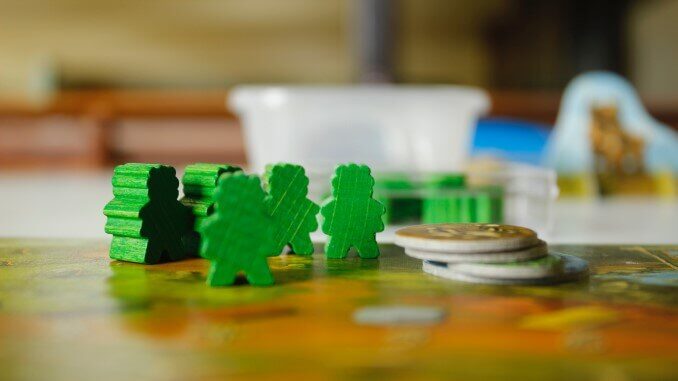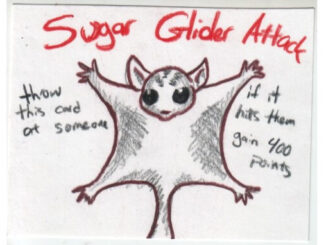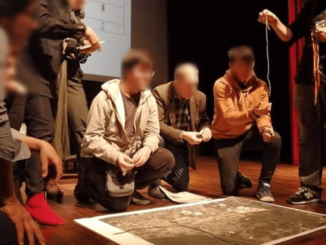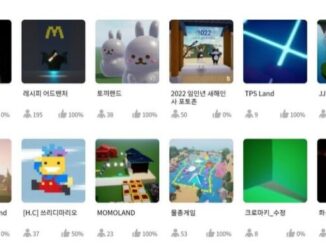
Ludogogy has entered into an agreement with Gamification Journal, based in Seoul, South Korea, for the mutual exchange of articles. This is the second of those articles we are publishing and it was in exchange for Mohsin Memon’s article about victory conditions from the previous issue, themed Winning
The recent trend for Co-Creation means that companies can work through the direct participation of users in product design or projects. This is a little different from ‘crowd-sourcing’ which substitutes the company’s manpower with that of the general public. Instead of a monetary benefit to users, co-creation can steer the the characteristics of products or project development in a more beneficial direction for end-users through their participation in the process.
‘Coca-Cola’ and the band ‘Maroon 5’ created the new song, “Is There Anybody Out There?” by gathering user opinion through SNS for 24 hours. The high numbers of downloads of this song led to income for a social welfare business in Africa. This was the case of co-creation between the company and users.
This article describes my previous experience of co-creation within a small group, and relates to editorial design rather than product development.
Co-creation in editorial design between designers and writers
In my previous three years of graphic design experience, I was an editorial designer, involved in publishing newspapers and magazines for several local communities in Toronto and Calgary. I suggest that this type of work is matched with the basic co-creation.
This type of work in printing and publishment is very simple and intuitive. The intention of editors or proprietors determine rhe direction of publications, and the content of articles and columns will fit these. Advertising also has an important role to provide income, but the interests of advertisers are not always the same as those of the publication.
The co-creation of designers and readers in design editing has a long history, and this is a simpler and primitive concept than the more recent co-creation concept of ‘the consumer is the company itself’.
Usually, editorial designers create the layout by considering the focus of the publication, and complete the design by matching content to layout concept. However, the designer rarely creates article or other written content. Except in very special cases, audiences or writers usually write the articles, and the designer adds the design elements to prepare the writing for publication.
Personal Development through Co-creation
In this process, the designer interprets the article in his or her own way and adds an appropriate design. Sometimes, designers can discuss design with writers. Written contents are often created entirely separately, however, and this process is very basic co-creation.
Also, consumers who participate in this co-creation, by creating user-generated content (UGC) derive reputation and self-satisfaction through displaying their identities and interests to other consumers. Design and media companies can expand their consumer base through facilitating publication of UGC. This process can be the basis for the continuous development of publications and other media properties.
Co-creation in design editing consists of multiple contributions by various participants. It can be challenging for designers to have to think of the new designs on an ongoing basis, but that is part of the pleasure in creativity.

The ‘Novel Relay’ Project
The ‘Novel Relay’ project grew out of a conversation with a colleague who also worked in local media, We discussed how to attract participation from the local community to increase profitability, which was decreasing. After serious discussions, we undertook the ‘Novel Relay’ project with participating writers and readers during the specified period. I worked on this project as a guest designer, and we recruited participants in advance, regardless of previous experience.
The project worked like this. Initially, we sent a request to write an article with a designated keyword to a specific participant. In turn, another keyword was selected from this article, and we relayed that to another participant, and so on, for a number of weeks. So, these serial articles took the form of a longer continuous article.
The Challenge of of Writing to Keywords
Normally, prior to this project, writers would send articles with their own choice of topics to the publication, but participants in this project found difficulty in writing articles to fit with the unpredictable topic. For example, writer A who usually wrote poetry about flowers, was given an unfamiliar science and technology topic, and instructed to write in prose story form rather than poetry. Writer B who usually wrote travel stories was given an unfamiliar cultural keyword, with which to write the column-type article rather than a travel story.
The process of making one big story from various serial articles was a very different direction for the writers. Additionally, this direction was not always what we originally wanted. From the designer’s perspective, I wanted to create an editorial design for this project representing a sort of ‘puzzle’ to decompose and assemble the specific theme. However, the unexpected changes of direction in the writing each week was more like a ragged patchwork, rather than a cogent interlocking puzzle.

Capabilities of Writers
From another perspective, this project gave new experience to designers or writers which broke them out of their habitual work. The unexpected co-creation with users and designers, resulted in the making of unstructured ‘raw’ contents.
When started the project as we ignored the level of competence of different participants. There was a capability difference in story development between professional and non-professional writers, so participants often did not make the connection between each story well. This led to a disorganized project process.
Although the larger project suffered from lack of structure, and was without a unified topic or genre, participants did benefit from the new experience of co-creation. Moreover, the interest and participation in media by local community users was high through this project, and one intent of the project – to increase profitability – succeeded to a certain extent.
New Direction

For designers, the ‘Relay novel’ project offered another opportunity to try different ideas beyond stereotypical designs.
In review, the results of this project didn’t meet our original objectives. Project progress which was forecast by myself and the publication, did not match closely the way that the real participants actually worked. In particular, cooperation to deliver the keyword among users did not work well. Nevertheless, I think that this primitive and unstructured co-creation has more positive points than negative ones. So, for better co-creation, I suggest the following.
- Designers and participants should define project objectives clearly: My colleague and I didn’t clearly define the objectives of the ‘Relay novel’ project.
- The right users should be identified for process participation: For example, if the writers were writing in genres and topics they were comfortable with, in the ‘Relay novel’ project, we could have made much better designs.
- We should identify Customers’ (participants’) needs around the project or product. Unfortunately, we didn’t correctly identify the work trend and characteristics of writers.
Co-creation of the Learner’s Perspective
We need to look at co-creation as a new experience beyond the habitual work. Writers participating in the project were accustomed to working with one genre and subject. From the perspectives of writers A and B, dealing with ‘science technology’ and ‘culture’ requires learning something new. The process of learning new things can be more effectively achieved in cooperation and team building situations – benefitting from social learning approaches.
How could a beginner approach the ’Relay Novel’? If organisers fixed the previously mentioned shortcomings, they couse use this approach well in an organization or education environment. In particular, creative projects could facilitate intrinsic motivation and cooperation among participants. It’s like a game.
Let’s take an RPG (Role-Playing Game) example for structuring the organization of the project. In an RPG, there are various classes of players who participate as fighter, magic user, healer, etc. Members of the party share information about their characteristics and skills, and they set the party’s objective such as retrieving a precious item through cooperation or killing monsters.
Facilitation of Co-creation through Gamification
Setting the priority to be meaningful and measuring it (leaderboard, milestones etc.) is important, if the objectives of party members (in terms of the publication, completed contents) is not to be wasted. They should more specific than simply setting objectives like ‘just participating in’ or ‘playing my part well’. By understanding the classes and skills of members and cooperating, they can defeat strong ‘monsters’. This shows just one example of how gamification can facilitate co-creation efforts.
This approach alters the relationship between educator and learner, and moves beyond motivation by reward or punishment. If co-creation works like a game, people can share their knowledge and learning methods and voluntarily cooperate. And like online RPGs, it’s likely that experienced players will mentor beginners.
In the case of this particular project, this process couldn’t continue because of short-term objectives (deadlines). However, in long-term projects including education or training, continuous co-creation can facilitate mutual supportive learning. Moreover, if we accept and learn from the above mistakes and failures, and carefully design the motivational aspects of participation and cooperation, it is likely that the prospect of participation will be very attractive.
Looking back to this project from the perspective of the business, our co-creation results are just ‘raw’ ones, but the designers, writers, and users used the experience to learn, expanding their own areas of expertise. If the ‘Relay novel’ project had continued for a longer period, knowledge about each other’s areas of practice, and the process of cooperation itself, would surely have developed. If we had had time to level up the process, the publication could by now contain more fresh content. Through this process, unstructured though it was, the writers’ capabilities were increased, and greater user participation was attracted.
- A Co-Creation Experience in Editorial Design - 7th March 2022





Be the first to comment